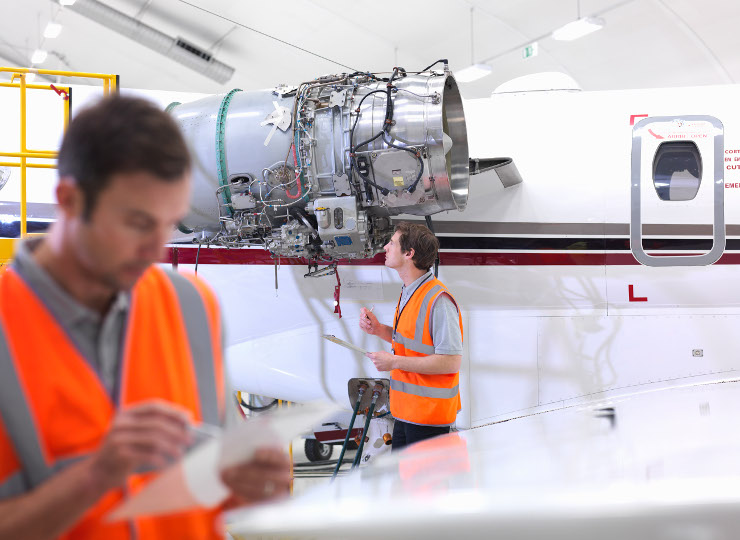How Connected Assets Increase Operations Efficiency
A Garner study in early 2017 predicted there would be approximately 8.4 billion Internet of Things devices in use by the end of the year. Not only does this represent an increase of 31% over 2016, but Garner forecast that almost $2 trillion would be spent on connected assets and other services in 2017.
A huge part of this growth will take place in the industrial sector – something General Electric predicts will grow in value to $60 trillion over the next 15 years. These numbers represent two key things. First, the IoT is seen as a way to both deliver value and solve complex challenges of logistics, supply chain management, manufacturing services, and more. Second, people are starting to realize that using sensor-based data to create rich data sets is a perfect opportunity to cut costs and create new, competitive advantages for themselves moving forward.
Leveraging the Internet of Things to create environments with connected assets brings a wide range of operational efficiency benefits that no one can ignore.
Carving a path to the future with the data of today
In most industries, the major benefit of connected assets has to do with how they enable both predictive and preventative maintenance. If you can see a complete overview of a piece of equipment’s usage and service history with the click of a mouse, you can identify trends and patterns that would have otherwise gone undiscovered.
Based on the conditions surrounding historical device failures, you can see ahead of time when things are lining up for future asset downtime. This creates the immediate benefit of increased asset uptime and reduced cost via enhanced coordination in a predictive manner. At the same time, it also puts you in a better position to achieve the long-term goal of improved customer satisfaction via equipment performance improvements.
In the aerospace industry, for example, every aircraft is a precious asset – and one expected to have a long life. A significant number of operating costs go towards maintenance, repairs, and improvements. Using data connected by sensors and distributed via the IoT for components like wing flaps and engines, maintenance providers can predict a part failure before it happens.
Even more, they can locate the necessary parts ahead of time (and the employees with the skill sets needed to perform the repair) and have both the parts and the experts waiting in the hangar when the aircraft arrives. This not only speeds the repair and gets the plane back in the air as fast as possible, but it also eliminates what could have turned into a dangerous and life-threatening situation. Thanks to the IoT, all this happens largely automatically – it doesn’t require much extra effort from a company’s leaders or its workforce.
Even beyond the fact that connected assets allow you to predict and prevent critical equipment failures before they happen, this creates other long-lasting benefits as well. Connected assets allow you to better anticipate ongoing downtime and maintenance needs within the context of an entire organization, not just in terms of specific assets. This puts an entire business in a better position to meet performance and quality objectives at all times.
Likewise, the real-time and accurate maintenance instructions and data about spare parts availability provided to engineers allows them to make preventative decisions today to guarantee positive outcomes tomorrow and beyond. Tracking factors like energy efficiency and equipment effectiveness also allow for more proactive, continuous improvement initiatives.
Companies can also see which jobs require which human and equipment assets, optimizing their workflows to meet those needs in a more logical way. It removes guesswork from the equation – suddenly you know exactly who needs access to which equipment and where they need to be to guarantee performance outcomes.
This brings the most important benefit of all: The ability to not only align technology with strategy in a way that meets customer needs, but to do so in a far more organized and cost-effective way.
Connected assets allow manufacturing executives to make smarter, more informed decisions moving forward. In a way, they’re not about “predicting” the future at all. Instead, they’re about using the information available to create an even better future through insight and action.
In the end, the benefits that the Internet of Things and connected assets bring to the table extend far beyond simple operational efficiency. They represent the next level of maturity for many organizations, particularly in terms of predictive and preventative maintenance. The data obtained from sensors and other devices doesn’t only give leadership more visibility into the current health and status of their assets, but also allows you to accurately predict when the conditions are appropriate for either certain or possible failure – and avoid both in one fell swoop.
With the technological advantage of connected assets, you can make smarter, more informed decisions in real-time. Connected assets create an environment where everyone can work smarter, not harder. The short-term benefit is a better, more efficient use of available resources today.
In the long-term, connected assets allow manufacturing executives prevent asset failure and downtime. These benefits put entire organizations in a better position to mitigate risk from the type of supply chain disruption that costs businesses an estimated $5,600 per minute, according to a survey conducted by The Ponemon Institute.
Learn how to innovate at scale by incorporating individual innovations back to the core business to drive tangible business value by reading Accelerating Digital Transformation in Industrial Machinery and Components. Explore how to bring Industry 4.0 insights into your business today by reading Industry 4.0: What’s Next?




